Need a new tool? 18 alternatives to Asana to boost your project management in 2025
Asana has been around for 15 years. It's a great project management tool, but in some respects it can seem a little dated.
According to its users, it's quite complex to get to grips with at first, sometimes lacks flexibility and is still rather expensive compared with the competition.
Well, if you've come across this article, you're already aware of all that, and what you're interested in are its main competitors on the market.
So we've listed, and tested for you, 18 project management software packages. So, whatever your company's profile, you're bound to find the tool you need.
What is Asana?
Asana is a project management tool used by over 100,000 organisations worldwide.
A platform 100% dedicated to the collaborative planning and monitoring of tasks, the software makes it possible to "reduce the work around the work" by avoiding unnecessary meetings, loss of information via email and anything else that can complicate collaboration.
With Asana, everything is centralised, clear and accessible to everyone involved in the same project.
The PMO (Project Management Office) tool integrates various monitoring display modes (lists, timelines, timeline, Kanban, Gantt diagrams) so you can see the progress of a task at a glance.
It can also be used to automate many time-consuming activities for teams, thanks to customised rules: automatic reporting, intelligent notifications, etc.

Asana
Asana is available as a free version. This Basic package is suitable for small teams of less than 15 people and freelancers. It includes displays in the form of lists, tables and calendars. It also offers an unlimited number of tasks, messages and storage space.
The following packages (Premium, Business, Enterprise) take things even further, with features such as :
-
an automated workflow generator ;
-
a chronological view, task templates, etc;
-
unlimited dashboards and reports
-
a customised rules generator;
-
planning and workload management
-
project portfolio management.
Why consider an alternative to Asana?
Is Asana obsolete in 2025? According to certain criteria, it's legitimate to ask the question. Limited field options, interface complexity, high cost, we take a full look.
Cost: Is Asana too expensive?
Asana's billing system isn't always easy to understand. Certain features are only available at a certain price (this is common), but also once you exceed 30 users. This can add up quickly and without you really realising it.
Complexity: too long a learning curve?
Asana is moderately complex to master. The main problem is that advanced users tend to create a tangle of projects, tasks and customised workflows that are difficult for other employees to understand. The result: investment in training and upgrades.
Collaboration between several projects
Asana's structure reinforces the silo aspect. Each team becomes a sort of small island, independent of the others, which is detrimental to intra-company collaboration. Projects have to be shared manually and are not synchronised in real time. Guest user management is also not one of the tool's strengths.
The 18 best alternatives to Asana: let's compare (+ comparison table)
Let's be clear, Asana is still a good management software. But when you're looking to optimise your project planning, you should always ask yourself the following question:
Is there a better alternative?
As it happens, yes, there are other solutions that do better than Asana.
So, what's the best project management software in 2025? Airtable? Clickup? Jira? monday.com? To find out, click below.
1 of 18
Airtable
We're kicking off our top Asana alternatives with Airtable! Airtable is a workflow management dashboard in the form of a spreadsheet. It's great for businesses that need to manage large amounts of data.
What sets Airtable apart is its UX. For your projects, you start from a blank base to create tables for your tasks, resources and collaborators, then you link them together according to your needs.
If you're looking for a simple tool for monitoring ongoing activities, you'll have to move on. If, on the other hand, you want software capable of managing complex relationships between different types of data, this is the way to go!

Airtable
Basecamp
Basecamp takes a diametrically opposed approach to Asana.
Here, the tools (to-do lists, message boards, calendars) are all compartmentalised for optimum clarity.
You don't need to be an experienced project manager to use Basecamp, as you can get to grips with it in just a few minutes.
Simple and practical, it allows all team members to see how the project is progressing by logging on to the platform.

Basecamp
ClickUp
What is your priority? Ease of use or a wide range of options? If you fall into the second category, Clickup is the project management software for you:
- advanced automation rules
- relationships between workspaces
- customisable dashboards,
- integrated document management,
- real-time chat.
Clickup is ultra-complete.
Ideal for collaborative multi-projects, but you're going to have to spend a lot of time and energy configuring it.

ClickUp
Hive
The Hive management dashboard has it all. It provides you with :
- a task manager
- a calendar
- a messaging system.
It requires no technical skills and takes just a few minutes to learn.
Admittedly, it has limited customisation options and a rather austere interface, but it does the job for small teams.
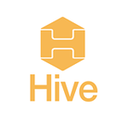
Hive
Jira
Jira is the king of agility. Thanks to its well-known ticketing system, it has become THE benchmark for software development projects:
- Scrum and Kanban boards,
- sprint planning
- linking tickets to code commits (programmers will understand),
- generation of complex, detailed reports, etc.
Jira offers a structure and depth that most generalist tools do not.
For tech teams, it's a tailor-made tool.

Jira
Microsoft project
Microsoft Project (MS Project) is the project management solution of choice for many traditional companies. The reason? Its natural integration with the Microsoft 365 ecosystem, but not only that.
Above all, MS Project offers a complete set of functions for :
- budgeting
- monitor a project
- deliver a project.
The interface is heavier than that of competitors who rely on agility, but this is deliberate.
MS Project is aimed at organisations with advanced planning, reporting and collaboration needs. Very solid stuff.
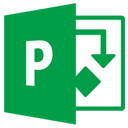
Microsoft Project
monday.com
monday.com is a multi-purpose software package that combines a spreadsheet and a management chart for maximum readability.
Everything is very visual and simple. The rows represent tasks or projects, while the columns correspond to attributes (status, person responsible, deadline). The colour coding makes it easy to identify bottlenecks at a glance.
If you're looking for visual clarity, monday.com has what you need.

monday.com
Nifty
Nifty balances simplicity and functionality. This platform combines traditional project management and team communication in a streamlined interface.
Nifty natively integrates real-time discussions for each project. No need to juggle between Slack and your management tool, everything happens in the same place.
You also get integrated time tracking and Kanban boards.

Nifty
Notion
Notion is a flexible cloud application that is ideal for marketing and content creation teams.
On this platform, you always start with a blank page where you add :
- tables
- calendars,
- databases to create a task (one page = one task).
All the construction is done in blocks, giving Notion a unique style for organising the different aspects of your projects.
However, this great freedom of customisation can also be time-consuming. That's why the community offers a host of resources and templates for you to use. We recommend them.
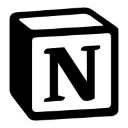
Notion
Paymo
Paymo is not the most feature-rich management software. It offers a classic visualisation with to-do lists and Kanban boards, but with a difference: integrated invoicing.
In practical terms, the progress of tasks is linked to timesheets.
It's very intuitive and a great help for freelancers and small subcontractors who are paid by the hour.

Paymo
Proofhub
Proofhub is a cloud-based management platform designed for collaboration. With this software, each project becomes a main silo around which the manager can organise :
- files
- tasks
- discussions
- and participants as required.
What's in it for you? Create workflows tailored to each project.
Proofhub's other strong point is its access management. Permissions for external collaborators and clients are clear and avoid nasty billing surprises (hello Asana 👋).

ProofHub
Smartsheet
As its name suggests, Smartsheet is based on the good old spreadsheet format.
This gives its interface a rather rudimentary appearance, although the software's developers have recently improved this aspect.
It may not be very intuitive, but Smartsheet is packed with features. It is aimed at companies that manage complex projects and require advanced customisation.
But for small teams, there's something better.
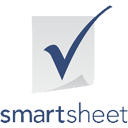
Smartsheet
Teamwork
Teamwork is perhaps the LGP on this list that most closely resembles Asana. But it stands out in one respect: collaboration with customers.
With flexible access settings and customised dashboards, your customers become stakeholders in your projects.
But don't worry, they don't have access to project details or your internal messages. You're in complete control.
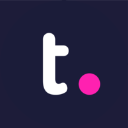
Teamwork
Trello
Trello is all about simplicity. If your teams are having trouble integrating Asana into their processes, this is the alternative.
Visualisation is based on the Kanban method. Everything is organised into cards divided into columns to represent the different stages of the workflow.
Each card contains :
- a description
- assigned members
- associated labels
- due dates
- and a checklist.
For simple projects, no problem. But for more complex planning, it may not be the right tool.
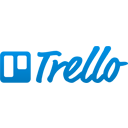
Trello
Workfront
Workfront (now Adobe Workfront) is aimed at large organisations that manage complex, multi-team projects.
The tool excels at portfolio management, with interactive Gantt charts and customisable real-time reports. It also offers complete visibility of resource allocation and interdependencies between projects.
Ideal for companies that need to keep accurate track of their projects.
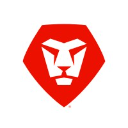
Adobe Workfront
Wrike
If you feel limited by Asana, Wrike offers a wide variety of features that might interest you.
The tool's interface is a little rigid at first, but turns out to be very intuitive for managing a large number of tasks simultaneously.
A tool designed for complex projects and medium-sized to large teams.

Wrike
Zoho projects
With Zoho Projects, you have total control over the customisation of your workflows.
The software incorporates all the fundamentals, such as :
- task lists
- Kanban boards
- Gantt charts.
But it goes even further with more advanced features like :
- integrated time tracking
- task automation
- incident tracking, etc.
It's the perfect solution for IT and engineering teams.
And of course, you benefit from integration with the other tools in the Zoho suite.

Zoho Projects
How do I choose an alternative to Asana?
Summary table of the best alternatives to Asana
| Tool | Pricing | Key features |
|---|---|---|
| Airtable |
Free Team: €17.06 / user / month Business: €38.37 / user / month Enterprise: customised pricing |
|
| Basecamp |
Free Plus: €12.79 / user / month Pro Unlimited: €254.98 / month |
|
| ClickUp |
Free Unlimited: €8.53 / user / month Business: €10.23 / user / month Enterprise: personalised pricing |
|
| Hive |
Small Hive: €115 / month Super Hive: €265 / month Mega Hive: €475 / month Company: personalised pricing |
|
| Jira |
Free Standard: €6.82 / user / month Premium: €11.94 / user / month Enterprise: customised pricing |
|
| Microsoft Project |
Planner Plan 1: €9.40 / user / month Project Plan 3 : 28,10 € / user / month Project Plan 5: €51.50 / user / month One-off purchase Project 2024: €929 |
|
| monday.com |
Free Basic: €9 / user / month Standard: €12 / user / month Pro: €19 / user / month Company: personalised pricing |
|
| Nifty |
Pro: €90 / month Business: €240 / month |
|
| Notion |
Free Plus: €9.50 / user / month Business: €19.50 / user / month Enterprise: personalised pricing |
|
| Paymo |
Free Starter: €5.03 / user / month Small Office: €9.30 / user / month Business: €14.41 / user / month |
|
| ProofHub |
Essential: €38.37 / user / month Ultimate Control: €75.90 / user / month |
|
| Smartsheet |
Pro : 8 € / user / month Business: €17 / user / month Enterprise: customised pricing |
|
| Teamwork |
Free Deliver: €10.99 / user / month Grow: €19.99 / user / month Scale: personalised pricing |
|
| Trello |
Free Standard: €4.26 / user / month Premium: €8.53 / user / month Enterprise: €14.92 / user / month |
|
| Workfront |
Select: customised pricing Prime: customised pricing Ultimate: customised pricing |
|
| Wrike |
Free Team: €8.53 / user / month Business: €21.32 / user / month Enterprise: custom pricing Pinnacle: custom pricing |
|
| Zoho Projects |
Free Premium: €4 / user / month Enterprise: €9 / user / month |
|
Our advice for an optimum choice
Don't select your new project management system solely on the basis of our ranking. It's a good starting point, but not enough. When choosing an alternative to Asana, you need to base your choice on specific criteria: your needs, your preferences, your budget, etc.
Your business needs: size, type of project, etc.
The main criterion is you! Before subscribing to a software package, analyse your needs carefully so that nothing is left to chance.
- How many people will be using the software?
- What is your field of activity (marketing, finance, creative)?
- How many tasks does your project require?
- Is the collaborative aspect important?
- Will you need regular reports?
The habits of your teams
Experience of project management varies from one employee to another. Some are more comfortable with a visual approach using Kanban boards (such as Trello or Notion), while others prefer Gantt charts (Microsoft Project, Smartsheet). When choosing your project management software, you need to take these different working preferences into account. A good tool is above all one that your teams want to use.
Ease of use: ergonomics VS complexity
We often tend to think that software with lots of features equals greater productivity. This is not always true. An overly complex interface can slow down adoption and slow down your teams. We advise you to opt for intuitive software with a short learning curve and smooth navigation.
Your budget: opt for modularity
Budget is often the most limiting criterion. If you can't afford to pay the asking price for a software package, it's probably not the right one for you. It's better to choose a similar alternative or a less comprehensive package. As your budget grows, you'll be able to opt for a richer plan.
Alternative to Asana: in a nutshell
Asana, used by 100,000 organisations, facilitates collaborative management with various display modes and automations, but has limitations: complexity, high cost and compartmentalised collaboration. The market for project management applications is particularly rich. As you can see, there's something for everyone.
Development team? Jira is there for you.
Multi-project management? Choose between Workfront, MS Project or ClickUp.
Spreadsheet fan? You'll love Smartsheet and Airtable.
Make your projects a success with the LGP that suits you best.
FAQ: alternatives to Asana
What criteria should I use to assess the compatibility of project management software with the specific needs of my team?
It's essential to analyse the size of your team, the type of projects you manage, the level of collaboration required, as well as your work preferences (for example: visual with Kanban, Gantt charts, or databases). Ergonomics, ease of use and the flexibility to adapt to your business processes are also key criteria when choosing the right tool.
How do you manage training and support for your teams when they migrate to a new project management tool?
To ensure successful adoption, plan training sessions tailored to the level of users, offer practical guides and tutorials, and provide ongoing support to answer questions and resolve difficulties. It's also important to appoint a number of internal contacts who can provide day-to-day support.
What are the advantages of integrating project management software with the other tools used in the company?
Integration with other applications (communication tools, CRM, messaging, office suites, etc.) helps to centralise information, reduce redundant data entry, automate workflows and improve overall productivity. Well-integrated software improves collaboration and reduces the risk of errors when data is passed from one system to another.
What are the options for ensuring data security and confidentiality in project management software?
Many tools include advanced features such as granular user access management, encryption of data at rest and in transit, activity audits, as well as options for compliance with standards such as the RGPD. Choosing software that offers accurate and regularly updated access control is crucial to protecting your projects and sensitive data.
How do you assess value for money when selecting a competitor to Asana?
As well as the price per user, you need to look at how well the functionality offered matches your real needs, how easy it is to use to limit training costs, and the options for upgrading or modularity. Finally, the quality of customer support and technical stability are also value drivers that need to be taken into account to ensure a good return on investment.
Article translated from French